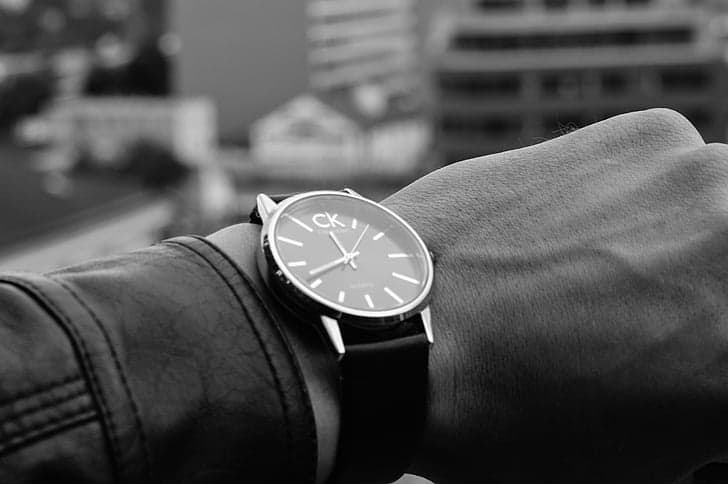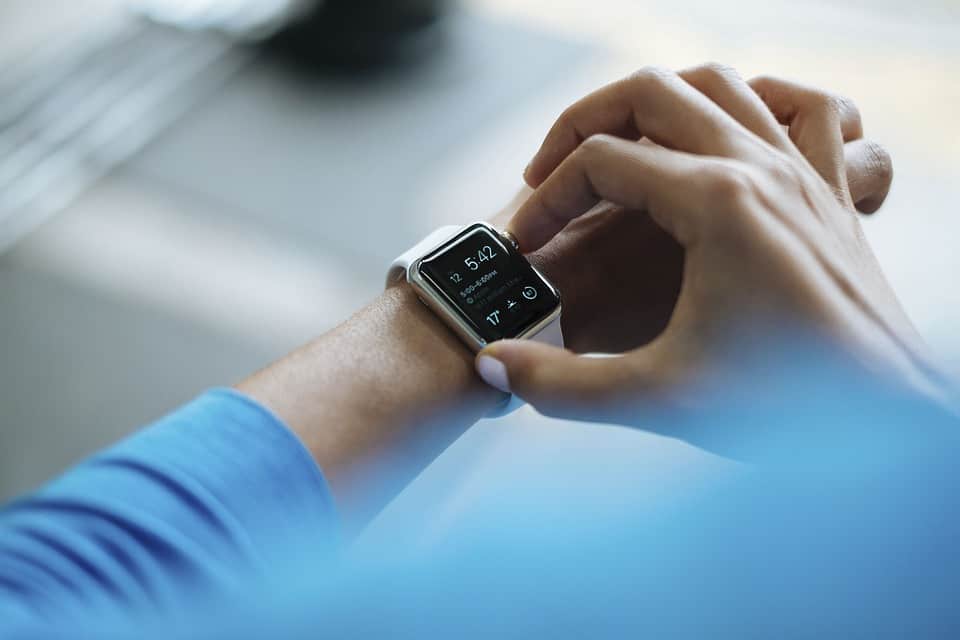Running two miles a day is an excellent way to get in some exercise every day. Two miles is an achievable distance that can fit right into your daily routine.
Running two miles can take anywhere from nine minutes to more than 30 minutes, depending on the runner’s fitness and speed.
The average mile time of a new runner in a two-mile run is around 20 minutes, while elite runners can complete this distance in about nine minutes.
In this article, we look at the various answers to the question, “How long does it take to run 2 miles?” We also discuss the benefits of running two miles. Finally, we provide some advice on how to get used to running two miles.

How Long Does It Take to Run 2 Miles?
In general, running two miles could take between 20 and 30 minutes. However, depending on a few factors, the amount of time it takes may vary significantly from person to person.
Your fitness, speed, and expertise level can influence how quickly or slowly you run two miles. That’s why it takes a new runner longer to run two miles than it does an elite runner.
A fit elite runner who participates in mile runs or marathons is more likely to run two miles in less time than an unfit new runner.
Fitness
Your fitness level determines how much endurance and stamina you have. That’s why new runners begin endurance training before anything else.
When you’re building up your stamina, you will walk more than run first. With each week, you should be able to decrease your walking distance and increase your running distance.
You should also start with one-mile running before you jump into two-mile running. Generally, this can take about four weeks to complete. Once you’re done, you should be able to move on to two-mile runs.
If you’ve worked up enough stamina, you might be able to run two miles in 16 to 22 minutes. Your running pace will increase as your endurance improves, and the time it takes you to run two miles will decrease.
You can also increase your fitness level by running long and slow. On alternate days, run the same distance at 80% percent of your average speed. Just multiply your usual pace by 1.25.
For example, if it takes you 20 minutes to run two miles, you should do your two-mile runs in 25 minutes.
While this method won’t necessarily speed you up, it can improve your fitness level. And when you have a high fitness level, you can begin training to increase your speed.
Another strength training method is to run long and fast. For example, once you’re comfortable running two miles at an average pace, you should increase your speed during the last half mile.
Speed
The second factor that affects how long it takes to run two miles is speed. Therefore, if you want to run a certain distance in as little time as possible, you should aim to increase your speed.
Marathon runners incorporate speed training in their workouts. This type of training helps them activate their muscles as much as possible. When the muscles in your body are maximally activated, your aerobic capacity increases.
Having a high aerobic capacity means more blood, oxygen, and nutrients flow to your muscles. It can also help with muscle recovery during resting time.
What’s more, speed training boosts the production of myoglobin, a type of protein found in muscles. During the intense muscular activity, such as running, this protein temporarily provides oxygen to the muscles.
The more you participate in speed training, the faster your pace gets. In addition, you can push yourself for short bursts of speed.
That said, endurance training should come first. It’s natural for new runners to want to improve their speed first. However, working on your fitness first reduces your risk of injury.
You should focus on running consistently and building your endurance level. Your speed should increase as you get used to running two miles every day. Once a two-mile run starts to feel like a cakewalk, you can begin improving your speed.
Warming up before you start running is one way to increase your speed. When you warm-up, your blood flow increases, bringing more oxygen to your muscles. This has the potential to increase your speed.
You should also maintain your average pace for at least a week before attempting to amp up your speed.
Skill Level
Your skill level influences how fast you can run a two-mile distance. For example, elite runners usually take less time to cover a two-mile run because their fitness level and speed are higher than new runners.
For New Runners
New runners who haven’t done any workout in a while may take about 30 minutes to complete a two-mile run.
Runners who alternate between running and walking can take more than 30 minutes to complete a two-mile running distance.
A noncompetitive, relatively fit new runner running non-stop can complete the two-mile run in about 20 minutes.
As the new runner gets used to running a two-mile distance every day, it will decrease the time it takes to finish the run.
You can start by going out on a daily run. Keep up a regular pace at first. Then, push yourself to quicken your running pace. Bit by bit, it should feel easier to gather some speed.
Ultimately, your running pace should gradually increase as each week passes. If you’re consistent, you might notice a slight decrease in the time it takes you to run two miles. After one week of running every day, your running time may drop by two minutes.

For Elite Runners
On average, elite runners can run two miles in about nine and a half minutes. Some elite runners have taken less time to run a distance of two miles.
At approximately eight minutes, Kenyan Daniel Komen holds the world’s best record for men. Ethiopian Meseret Defar has the women’s record at around nine minutes.
Elite runners are used to running long distances in the shortest amount of time. They’ve built enough stamina and speed to complete a two-mile run at full speed.
You shouldn’t compare the time it takes you to run two miles with others, especially more experienced runners. As long as you’re improving, your only competition should be you.
The Benefits of Running 2 Miles
Regardless of how long it takes you to run two miles, you can reap numerous benefits from doing so on a daily basis.
Physical Health
The most rewarding aspect of running two miles every day is the effect it has on our physical health. It makes no difference whether your goal is to lose weight or to run a marathon. Running is almost always beneficial to one’s physical health.
Running daily can significantly reduce the risk of a vast array of health conditions, including cardiovascular diseases.
Combining running two miles a day with a balanced diet may decrease the risk of heart disease, high blood pressure, high cholesterol, insulin resistance, and many more diseases.
Running two miles a day can even alleviate and manage symptoms of cardiovascular diseases. In fact, research suggests that even a small amount of running per day can raise a person’s life expectancy.
What’s more, running on a daily basis can increase blood flow to the brain, which in turn can make you feel more energetic. People who run first thing in the morning may experience an energy boost that helps them get their day started much better than caffeine.
Runner’s Itch
One thing to keep in mind is that new runners may experience tingling or itching in their legs. This is known as runner’s itch, and it occurs in new runners as well as runners who have taken an extended break from running.
Runner’s itch can be the result of increased blood flow or expanded blood vessels. Neither of these reasons is cause for concern. As your body becomes accustomed to running, the itchiness will lessen in intensity until it vanishes completely.
Mental Health
Running two miles a day can make your mind feel good. It keeps your body and brain active as well as boosts endorphins, which can put you in a good mood.
What’s more, taking up running helps you build habits and set goals. These benefits aren’t just good for maintaining your mental health. They can help you recover from stress, anxiety, and depression.
Being able to run two miles regularly can give you a sense of determination and accomplishment. These positive feelings could bleed into your general outlook on life.
Remember that you don’t have to run two miles every day to feel better mentally. According to the Anxiety and Depression Association of America, as little as five minutes of aerobic exercise every day can stimulate anti-anxiety effects in the brain.
Running can help quiet down your mind and freshen your perspective whenever the world around you feels frustrating and turbulent.
Still, it’s worth noting that running won’t cure depression and anxiety. It can only alleviate their symptoms.

Weight Loss
Running can be an excellent aerobic exercise to lose weight. You only need a good pair of running shoes and clothes, as well as a safe place to run. There’s no need for any special equipment.
This form of exercise does more than just burn lots of calories. It can also make your body burn calories long after you’ve finished working out. It can even curb appetite and target visceral fat.
Still, the exact number of calories burned during a two-mile run depends on varying factors. Your weight, gender, age, body composition, fitness level, and how fast you run are all variables that affect how many calories your body burns.
That said, you can use estimates from Harvard Health Publishing as a basis to start from. A 125-pound individual who takes about 24 minutes to run two miles may burn roughly 160 calories. If that same person runs two miles in under 20 minutes, they can burn about 200 calories.
As a result, you can lose about one and a half pounds—if not more—running two miles a day for an entire month.
The most important thing to keep in mind is weight loss takes time and consistency. That’s why you should build a habit of running two miles a day for a prolonged period of time.
You can shed and burn away a huge amount of excess fat if you keep up this running habit as well as maintain a healthy diet.
Habit Building
No one suddenly starts running two miles a day. It requires some time and habit building. Don’t get discouraged, though! Running two miles a day is an achievable habit.
Most elite runners admit that developing a running habit can be difficult at the beginning. The first couple of weeks for a new runner need consistency, accountability, and motivation.
Once running becomes an integral part of their daily routine, these new runners may find themselves enjoying the running routine. Some even end up becoming marathon runners.
Making a habit out of running can increase your fitness level and endurance. You’ll be able to run two miles in less time. You can also run a longer distance without breaking a sweat.
What’s more, if you can develop a daily running habit, you can begin to build other healthy habits on top of it. Running two miles every day can help you become more consistent.
As a result, as you layer healthy habits on top of one another, you may find it easier to stick to them.
Goal Setting
Goal setting is essential for any runner who wants to run two miles a day. Striving to achieve a goal on a regular basis can motivate you to pursue and attain more goals in the long haul.
For new runners, they can start by setting a goal to run two miles in as little time as possible. Attaining this goal provides enough motivation for the new runner to pursue further goals.
When you achieve your goals, you can become more motivated to set further goals and reach them. In fact, according to the American Psychological Association, attaining your goals can generate a sense of intrinsic reward.
Intrinsic rewards can be the personal satisfaction you derive from reaching your goals. They can fuel your motivation to attain more goals.
When you’re intrinsically motivated, you have a higher chance of accomplishing your goals, including other daily tasks.
How to Get Used to Running 2 Miles
It can be pretty frustrating when you don’t see immediate results. That’s why it takes motivation and some discipline to get used to running two miles. It’s not impossible, though.
You can quickly become accustomed to this daily routine if you take some practical steps.
Planning Ahead
The first step is to plan your run ahead of time. This will not only hold you accountable to follow through, but it can also make you run more consistently.
You need to pace yourself as you build a stronger habit. You can run in the morning on alternate days and at night on the days in between. Choose a time of day when you’re most likely to be available.
Then, pin your schedule on a bullet-in board or on a surface that you look at every day. You’re more likely to stick to your running schedule if you have physical evidence that you can see.
Interval Training
Your two-mile run could begin with interval training that combines running and moderate-pace walking. You can run a half-mile, walk a half-mile, and then repeat. Do this as many times as your body requires to adapt.
Once you feel comfortable with this interval training, you should decrease your walking distance to a quarter-mile and increase your running distance to a three-quarter-mile, then repeat.
Next, run one mile, walk a quarter-mile, then run a three-quarter mile. After you become accustomed to this routine, run one and a half miles and walk a half-mile. Run one and three-quarters of a mile and walk a quarter-mile.
The next step is to run two miles without any walking breaks.
Recovery Time
While running two miles every day is incredibly beneficial, you should take days off from running every now and then. This is especially crucial when you’re starting out.
You can rest your body either with static or active recovery. Static recovery can include getting plenty of sleep or laying down.
Active recovery includes exercising but at a very low intensity. You can go for a one-mile walk during active recovery.
When you begin training for two-mile runs, you should take walking breaks if you need to. Don’t let your fitness and experience level discourage you from taking it slow from time to time.
Some days, running two miles may feel like a piece of cake. Other days, it could take a toll on you physically and mentally. It’s perfectly normal to have those off days. What matters is to stay motivated and consistent.

In Conclusion
How long does it take to run 2 miles? In the end, unless you’re training for a race or a marathon, it doesn’t matter how long it takes you to complete a two-mile run. If you can consistently run two miles per day, you should be proud and satisfied.
Once you get the hang of it, you can aim to increase your fitness and speed within the two-mile run frame.
What’s more, running is a progressive exercise. Once you’ve mastered running two miles per day, you’ll be ready to progress to longer distances and more difficult challenges. If you have the time, you can train for three-mile runs, then four and five-mile runs.
